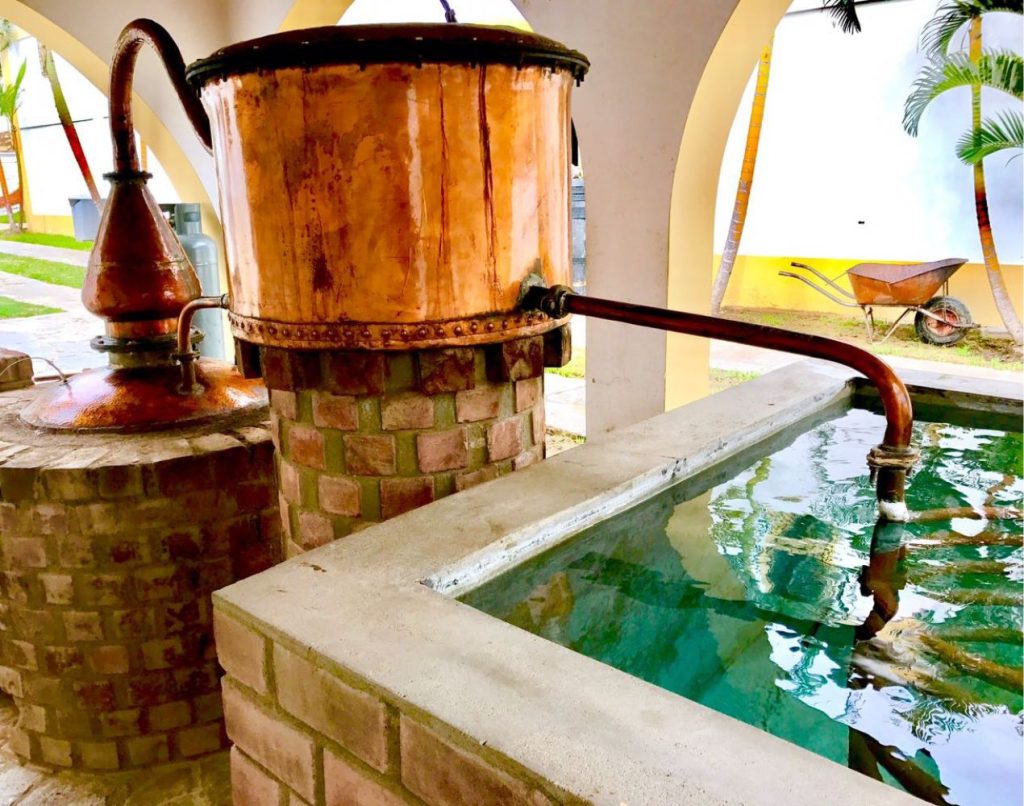
In the world of spirits, the pursuit of flavor complexity and authenticity often takes one down the path of traditional methodologies. Such is the case with our pisco, a testament to heritage and craftsmanship, where even the minute presence of copper deposits speaks volumes of our commitment to quality and traditional practices. In this article, we’ll delve into why these copper elements are not just normal but integral to our distillation process and the unique profile of our pisco.
The Role of Copper in Distillation
At the heart of our distillation process lies our 400 litre copper still, a classic piece of equipment revered for its superior heat conductivity and catalytic ability to enhance the purification of our pisco. Copper plays a pivotal role in removing sulfur compounds and other impurities, ensuring a smooth and refined end product. However, it’s this intimate interaction between the copper and the distillate that leads to one of the most intriguing aspects of our pisco: the presence of copper deposits.
The Natural Process
During distillation, certain “fat bodies” naturally contained within the pisco—complex organic compounds—react with the copper surfaces of the still. During this interaction, the spirit is subtly infused with a trace amount of copper. These fat bodies, carrying along microscopic copper particles, are then carried through to the final liquid. This phenomenon is a natural by-product of our commitment to using traditional distillation methods, which prioritize flavor and authenticity over modern filtration techniques.
The choice for unfiltered pisco
Our production method remains firmly traditional, notably in our decision to forego post-distillation filtration. Whilst cold-filtering would remove the last remnants of such copper traces, it would equally remove organic compounds critical to our pisco’s flavor profile. Since such particles are safe to consume do not constitute any health hazard for consumers, we currently prefer to leave our pisco unfiltered.
In our pursuit to constantly improving our product, we are searching for modern solutions without affecting the quality and authenticity of our product, with the aim to completely remove the particles in the future. For the time being, we embrace the presence of these elements as an inherent part of our process, and believe that they contribute to the depth and complexity of our pisco. This decision aligns with our philosophy of maintaining the full spectrum of flavors that can be found in our blend.
Understanding Copper Deposits
The presence of copper deposits in our pisco might raise eyebrows, as it is indeed, to this day, a phenomenon that is only well-understood and appreciated by the finest connoisseurs of traditional spirits. With changes in temperature, especially at colder ones, these copper particles can become more visible, precipitating towards the bottom of the bottle. However, this occurrence is perfectly normal and has been noted in the production of other esteemed spirits like rums and cognacs historically.
Safety and Quality
It’s important to address concerns regarding the safety of these copper deposits. The levels of copper that migrate into the spirit are minuscule and well within the safety standards for consumption. Similar to how trace minerals in water can contribute to flavor and health benefits, the copper in our pisco is part of its unique character, without compromising the safety or quality of the product.
We have run analysis with three different laboratories to ensure that the levels of copper which are found in our pisco do not bear any prejudice to our consumer’s safety. Should you wish to examine such results, you may solicit them by sending us an email at guillaume@rompemar.com.
